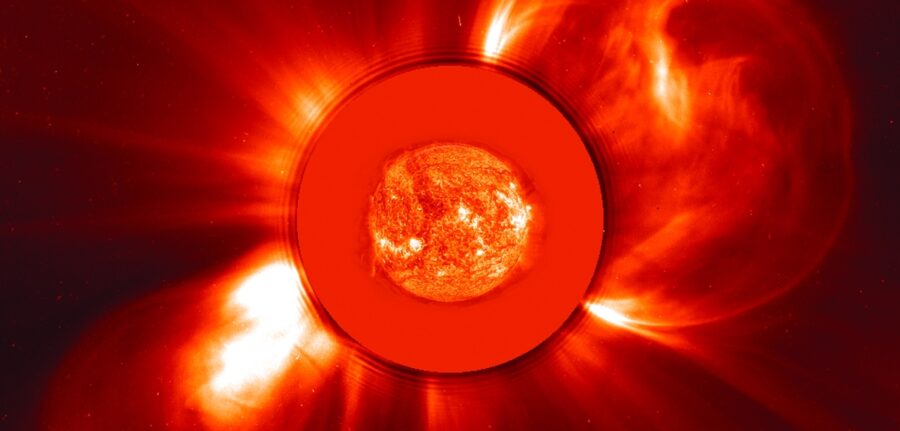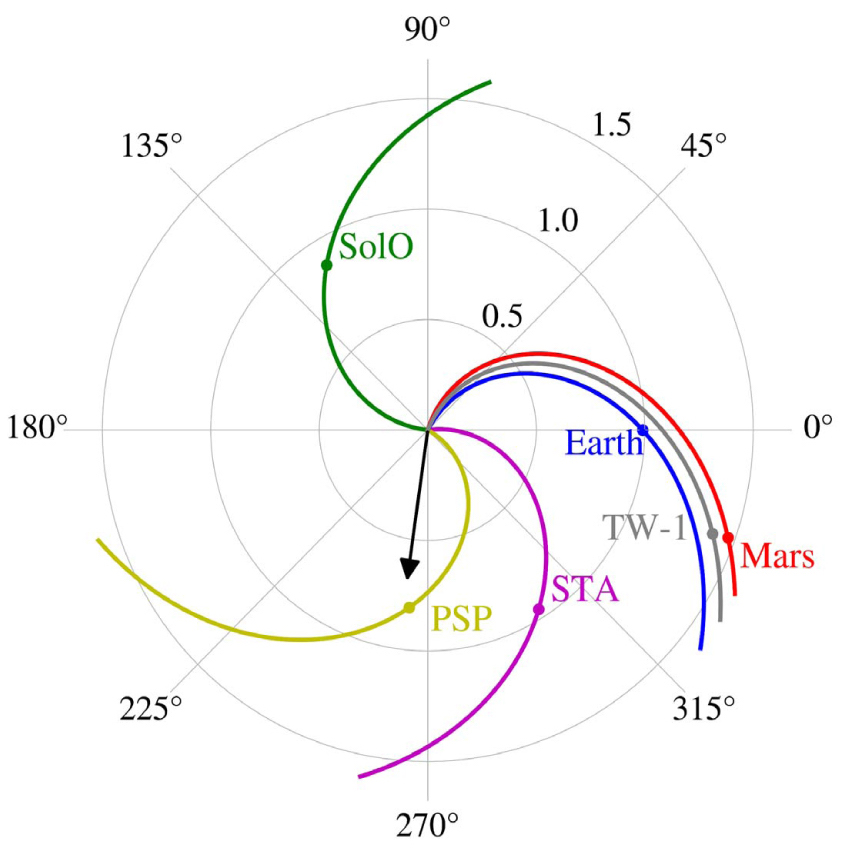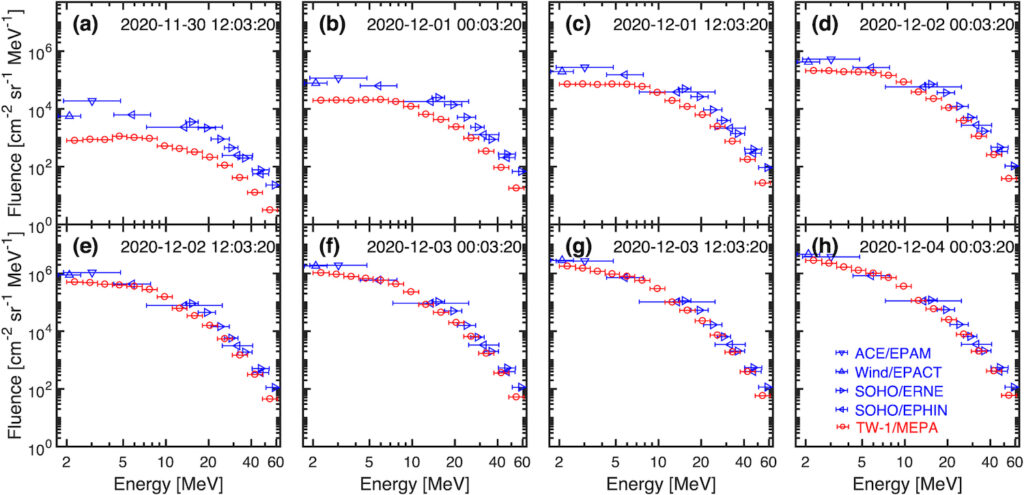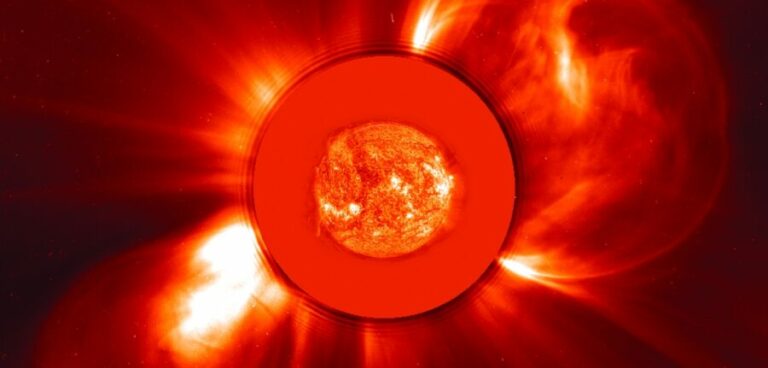Caught in a Solar Storm on the Way to Mars
A chance alignment between Earth and a Mars-bound spacecraft has given us a rare glimpse into the movement of high-energy particles from the Sun.

ESA / NASA / SOHO
A accidental alignment of Earth and a spacecraft headed for Mars has allowed us to get a unique look at how high-energy solar particles flow across space. In order to properly plan crewed expeditions to our neighboring planet and beyond, researchers can benefit from the data from this event by better understanding the radiation environment close to Mars.
ENERGETIC PARTICLE PARADE

NASA’s Goddard Space Flight Center Conceptual Image Lab
A wispy sea of charged particles that escape from the Sun’s atmosphere fills the space between the planets in our solar system. Cosmic rays, which flow and ebb against the 11-year cycle of solar activity, are fast protons and atomic nuclei accelerated in harsh settings across the cosmos. High-energy particle bursts from the Sun, which can be released rapidly in powerful solar storms, break up this wavy particle backdrop.
When a spacecraft leaves the magnetic field of Earth, it must travel through this sea of particles and endure solar storms. And if we want to send astronauts to other planets in the future, we’ll need to understand how high-energy solar particles, which are dangerous for both humans and electrical equipment, move across the solar system.
WHEN SPACECRAFT ALIGN

Adapted from Fu et al. 2022
Yongjie Zhang (Chinese Academy of Sciences), Shuai Fu (Macau University of Science and Technology), and Zheyi Ding (China University of Geosciences) led a team that examined the high-energy solar particles created in an event that occurred in November 2020 when the Sun released a solar flare and a massive explosion of solar plasma known as a coronal mass ejection.
A series of unplanned spacecraft alignments along the same solar magnetic field line brought about this incident. Due to this alignment, numerous spacecraft near Earth measured the same burst of energetic particles as the Tianwen-1 spacecraft traveling to Mars, millions of miles away. This provided a unique opportunity to study how energetic particles from the Sun travel through space along magnetic field lines.
DIFFUSION AND EVOLUTION

The scientists discovered that the magnetic field line connecting the satellite did not extend back to the particle’s source by comparing the timing of observations from Tianwen-1 to those from three spacecraft orbiting Earth. This implies that for the particles to reach the spacecraft, magnetic field lines must have been traversed, or they must have dispersed.
The scientists also discovered that when the particles moved from Earth to Tianwen-1’s position at 1.39 au, the shape of the particle energy distribution stayed the same for low, moderate, and high energies. This shows that rather than being determined as the particles move through space, the structure of the energy distribution is defined earlier, when the particles are propelled to high energies.
The solar energetic particle event in November 2020 was the first one that Tianwen-1 saw, but it most certainly won’t be the last. As the solar cycle intensifies, the spacecraft will continue to track high-energy particles from its position in Mars’ orbit, gathering crucial information for comprehending the radiation environment around Mars and preparing for next missions.
Do not forget to share your opinion with us to provide you with the best posts !




0 Comments